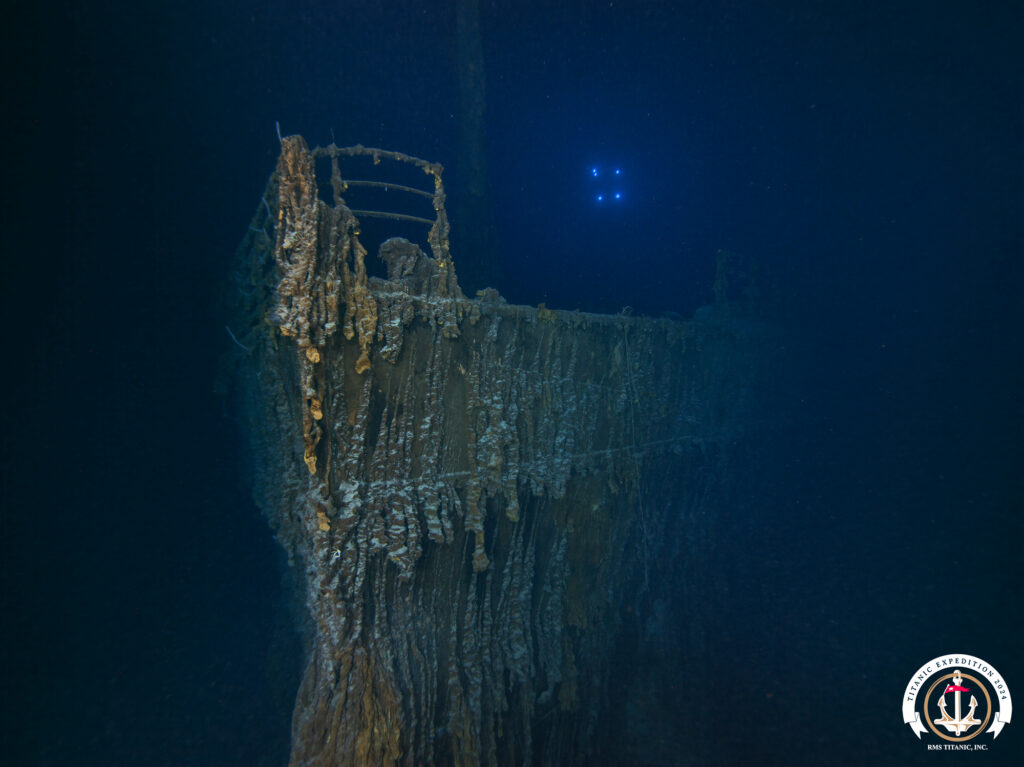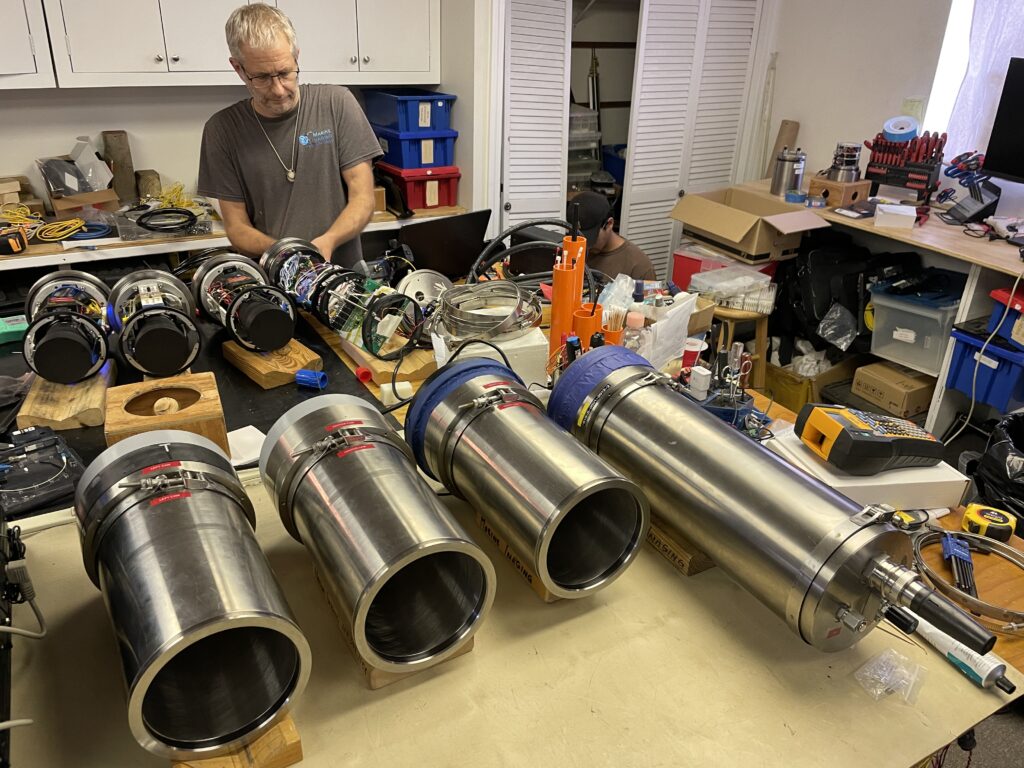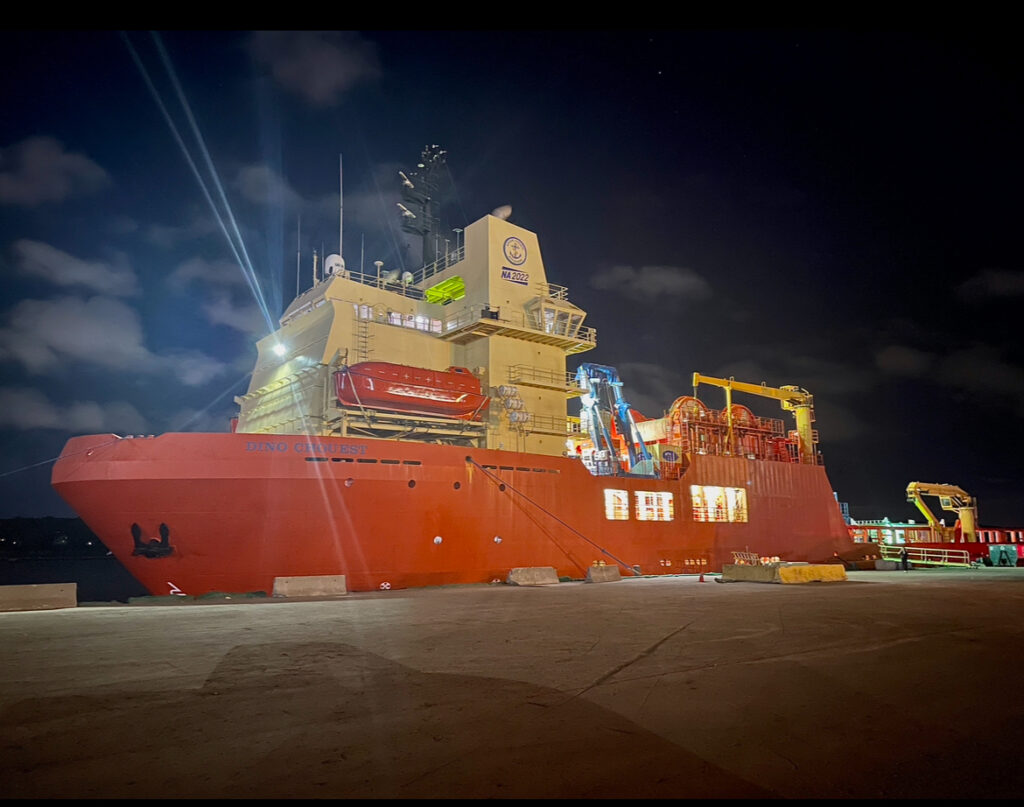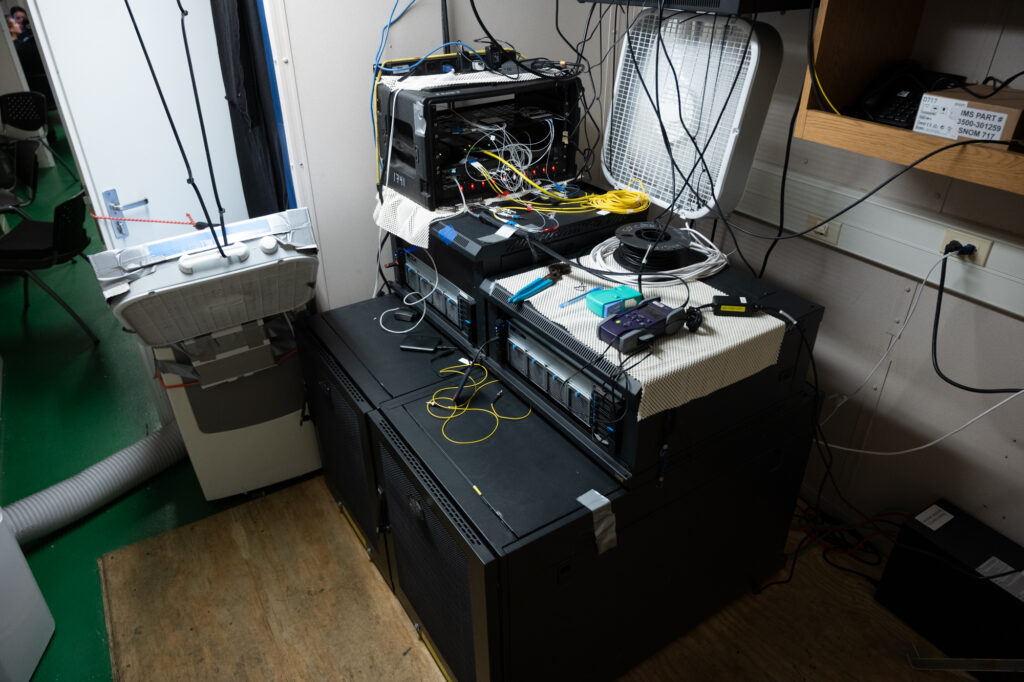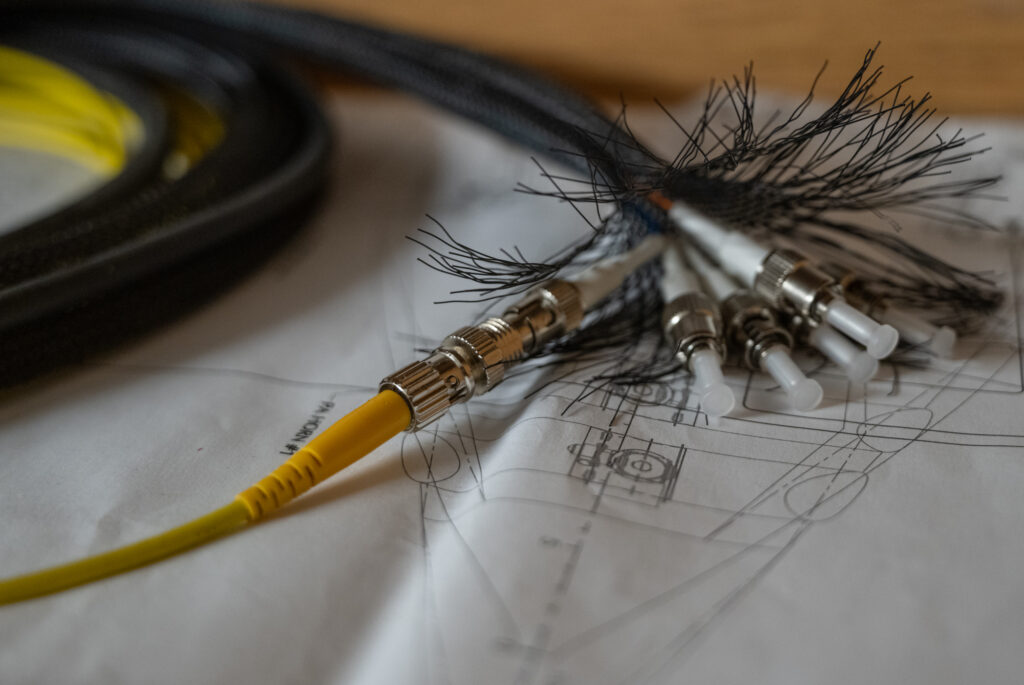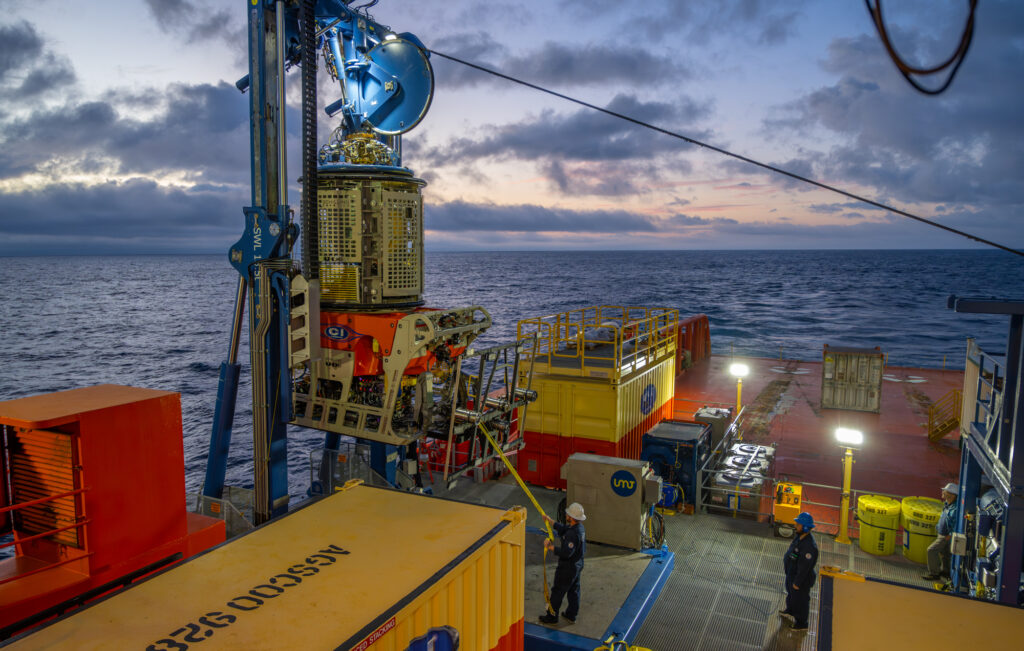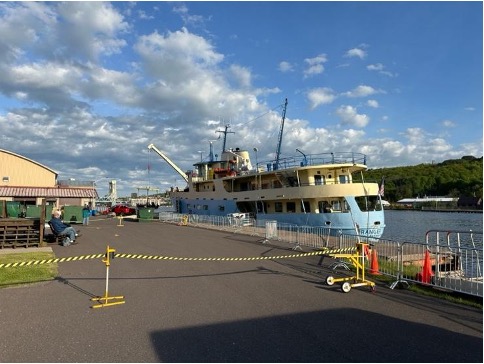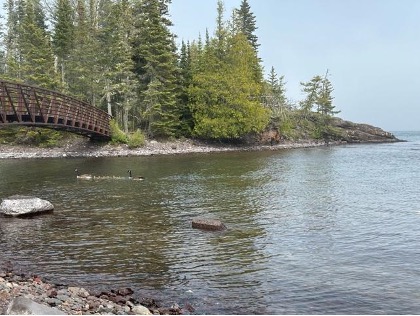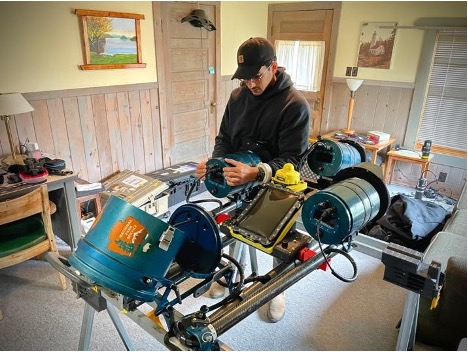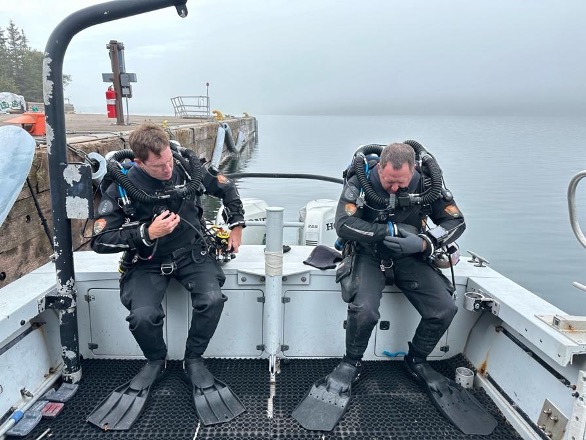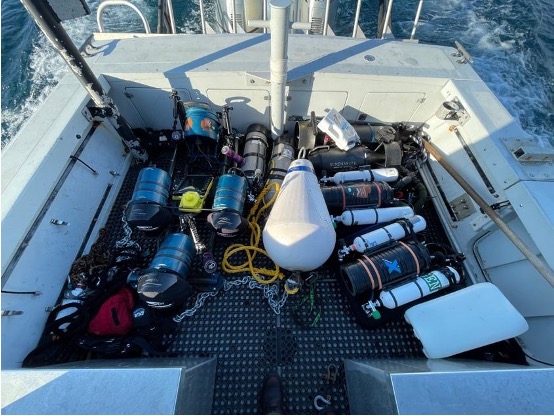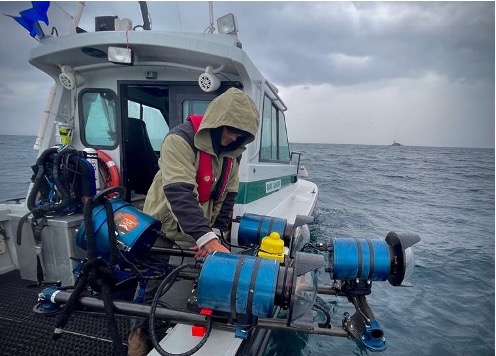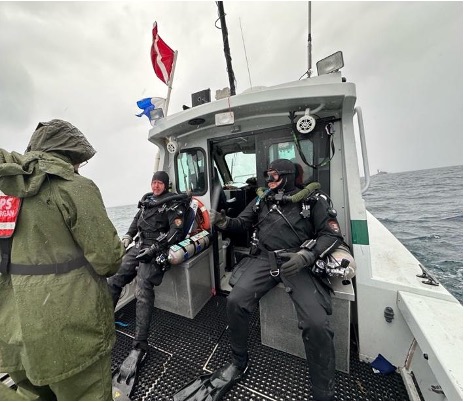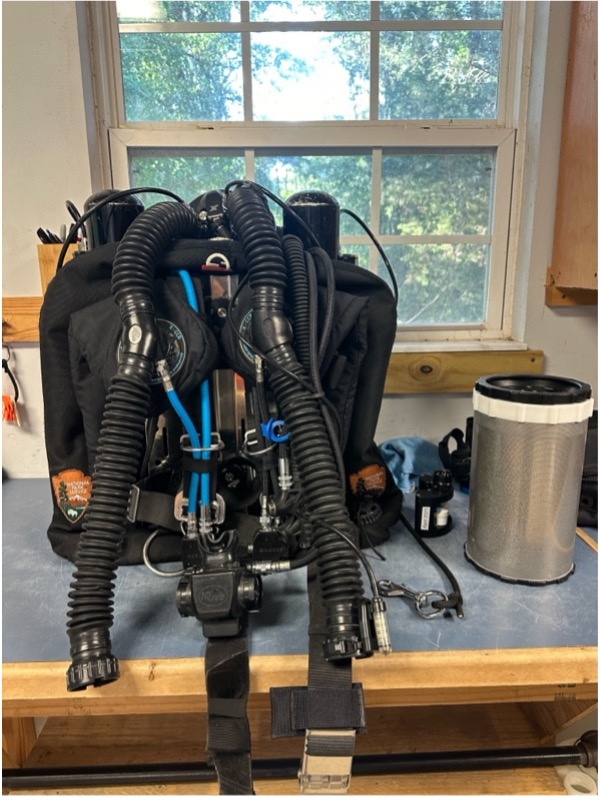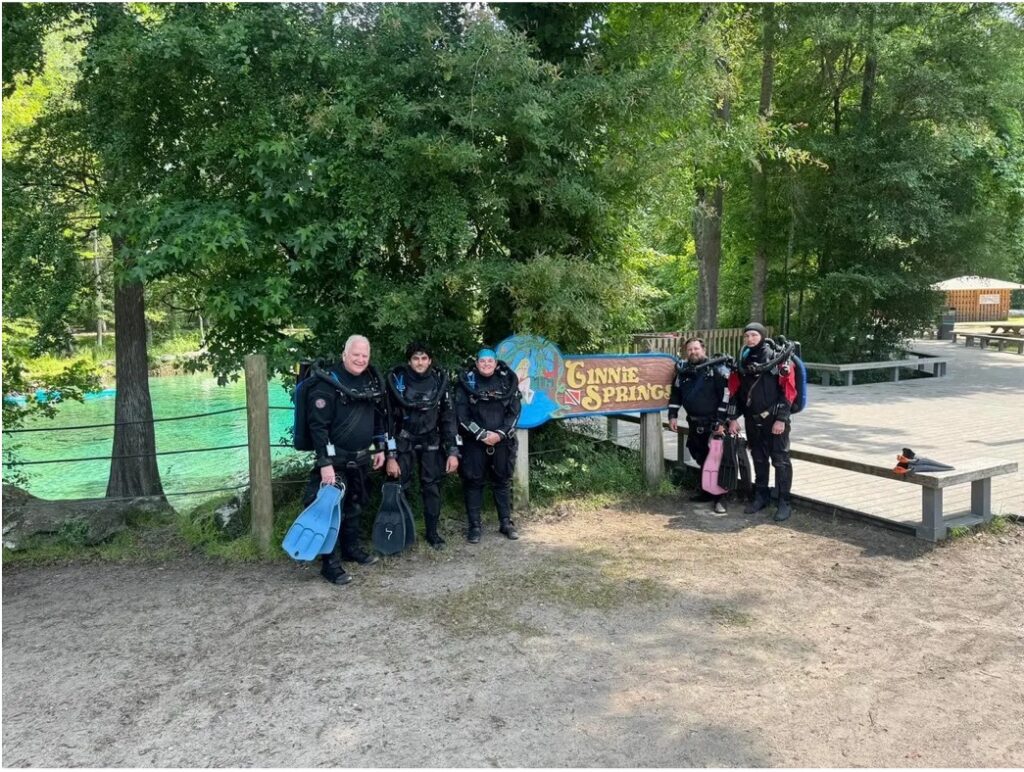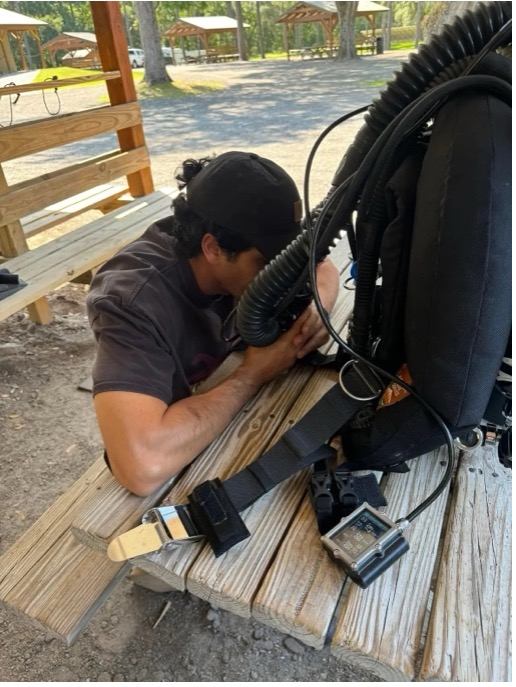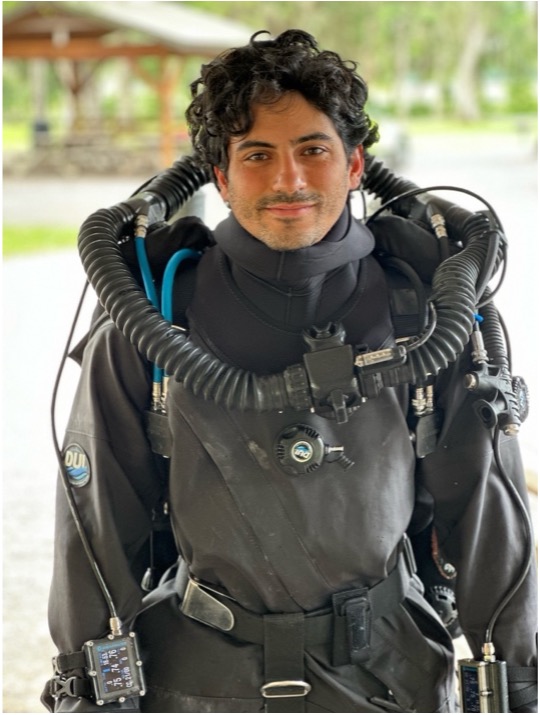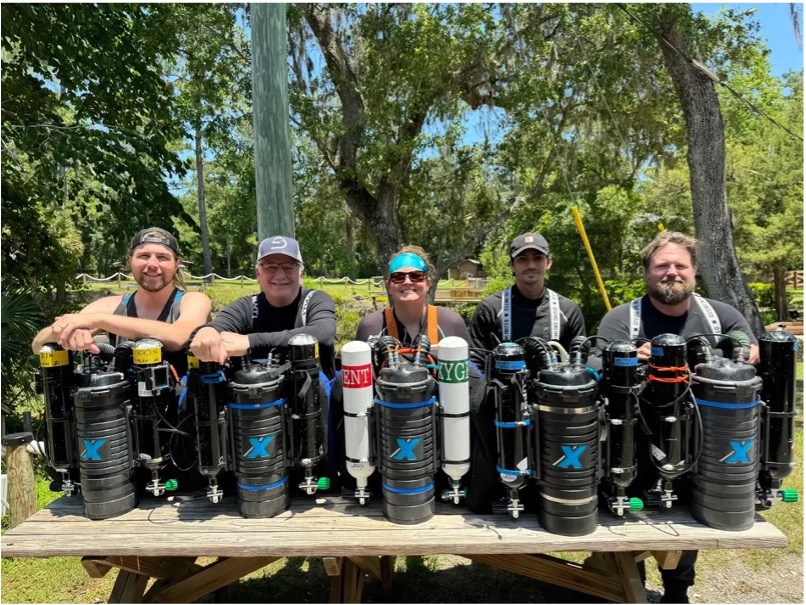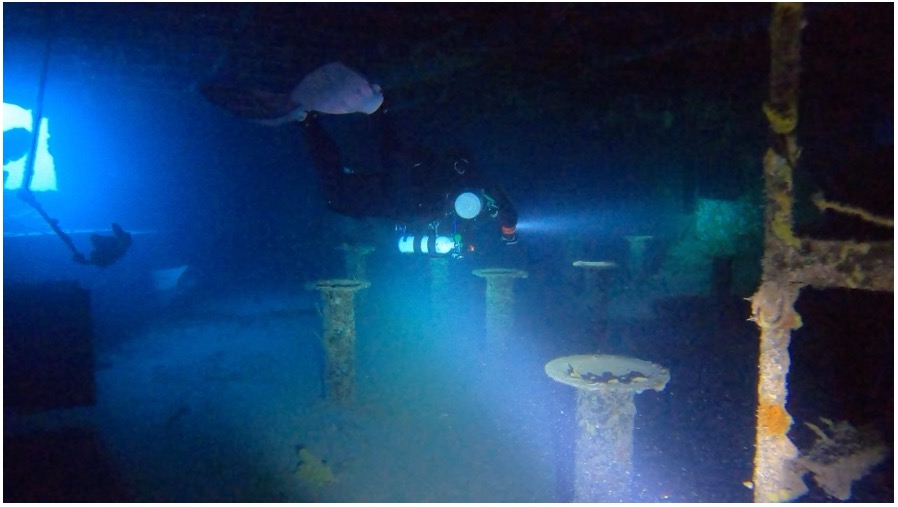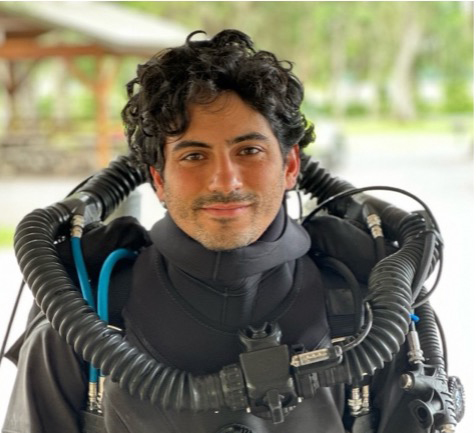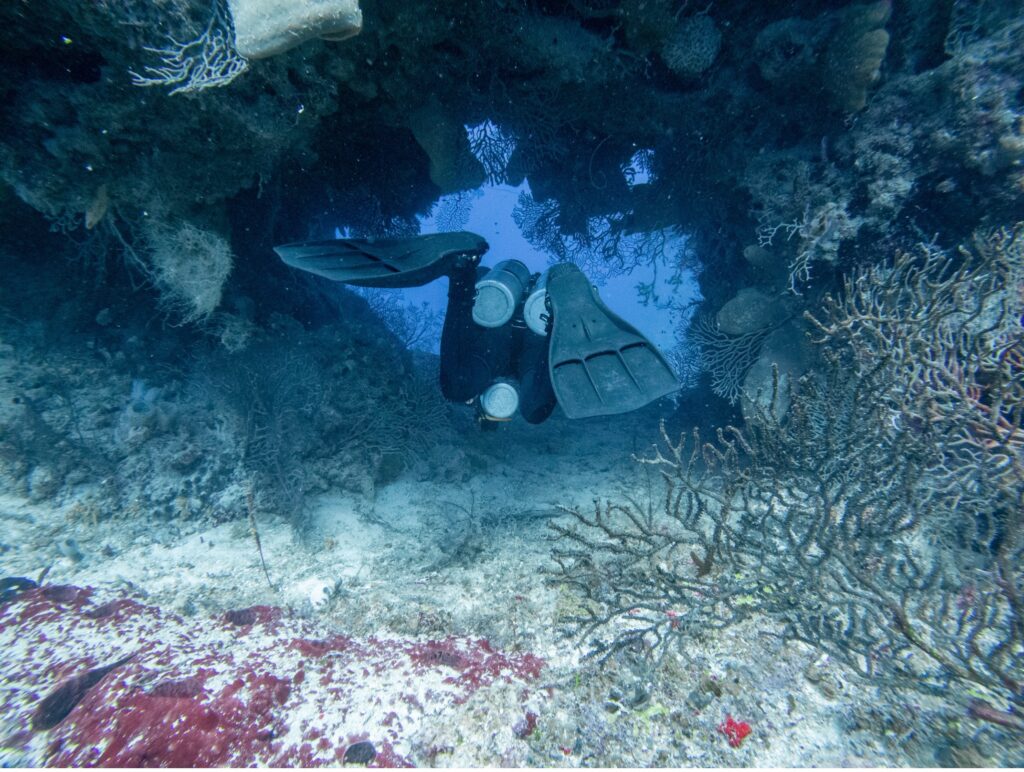
Just as soon as the Dino Chouest has peaked its bow over the continental shelf the sun cracks over the horizon, time for the ROV’s first dive with their new high-tech additions. Not only will this be a shakedown for our cameras, but it will also be a chance for the ROV crew to set the right buoyancy and trim to properly displace the weight of the camera array that has been added on. As we hit the bottom, everyone’s eyes shoot to the screen that has all the cameras live feeds; this is the best screen on the whole ship as every inch of our survey lines will be flashing in front of our eyes three times over. While we are not yet at the Titanic, seeing the bottom, at over 500 meters below, for the first time is still an incredible experience. Throughout our test dive, we test many variations for height off the bottom, light intensities, and camera parameters. The many crabs crawling around act as our test subjects for a few hours as we work to get the sharpest images we possibly can. Imaging in complete darkness is a tremendous challenge, as every parameter you change affects another. Finding the right balance between ROV speed and height off bottom, while maintaining sharp focus and limiting motion blur all while retaining enough light in our images will be a dance we will do for the next few weeks on site.

With trial dives over and a four-day journey ahead of us, there is no time to wait around — workflows for changing camera settings, data management, and exporting begin. Each morning we glance at the vessel’s navigation chart as we get closer and closer, signifying the amount of time we have to tackle what is at hand before the clock runs out. Constant talks about preferred lane spacing for the appropriate overlap surround us as we get closer, and survey lines start to get laid out on the grid of the wreck site. We’ll be separating the wreck site into boxes and within each box running lanes at three-and-a-half-meter spacing. This will ensure we retain enough overlap from lane to lane in order to render models, but also cover enough ground at a quick enough rate to image the site and debris field. As we arrive on site and the subs get prepared for their first titanic dive, final checks are done twice if not three times over. Cameras are mounted, cables are routed, and fiber is cleaned, with over a six-hour round trip journey from the bottom, the project can’t afford to be held back by unnecessary ROV trips back to the surface.


Leading up to the first dive there were so many tasks I could distract myself with, whether it be becoming familiarized with the software we’ll be using or assisting with camera setup. However, once the ROVs finally splash and start making their way towards the bottom, not much can be done but wonder what the wreck will look like and what kind of debris we will come across. As soon as we reach the bottom, image quality checks and camera parameters are adjusted. Each time we make a change we make sure to export a few images to check our results before moving on to adjust the next camera. Finding the appropriate speed for the ROV to fly is of the utmost importance. Too fast we’ll get impacted by motion blur, too slow and we won’t cover enough ground to complete the survey area. With each change to ROV speed or camera setting, quality checks must start over again, in order to ensure our resolution is where we expect it to be; sub-millimeter.

We’ll be in constant communication with the ROV pilots over the next few weeks, as they’ll be calling out lanes and we’ll periodically have them adjust the height and camera tilt according to the frames we see on our camera feed, ensuring exposure and depth of field is ideal for the debris we come across. In the meantime, most of our lanes will be surrounding debris fields and we’ll get to the superstructures later. After the buzz about reaching the bottom dissipates and we make our first few passes, it’s time to head to bed. Brett and I will be in the control van from 12 AM to 6 AM while Evan and Josie will be from 6 AM to 12 PM, and then again from 12 PM to 6 PM and 6 PM to 12 AM. Imaging around the clock in these stints ensures the camera operator will always be sharp and aware of the feed in front of them, crucial for quality control. As we settle into our new routines and our bodies submit to our new alien sleep schedules, days begin to blur. It is amazing how you could be on a vessel in the middle of the North Atlantic and go days without taking a few minutes to stare off into the horizon to absorb your surroundings.

As sunrises begin to blur with sunsets and single twenty-four-hour days start to feel like two, the lanes start ticking away. Getting closer and closer to the wreck we start to stumble into bigger debris. Entire sections of the ship and massive boilers that look as though they were made of paper and torn off from the tremendous force of the wreckage. Its always tricky to understand the scale of the objects, but a quick internet search reveals just one of the many boilers we imaged was taller and wider than the control van we were sitting in — truly incredible. Throughout our imaging, we consistently pull images from the servers for field renders. Not only does this serve as a quality check for our lane spacing and camera parameters, to ensure there are no holes, but it also captivates everyone who walks through our control van. As word spreads more and more people stop in to have a look at the live feed that flashes in front of our eyes 24/7, and look at the possibilities of future model creation.

Many of the debris we came across we were able to image by continuing in our lanes and running three and a half meters off the bottom with the cameras facing straight down. With enough time of your eyes glued to the screen this way the camera feed finds its way to morph, and you start getting the sense you are right there on the bottom swimming along, just with three eyes instead of two that all seem to be blinking at their own rate. What was exciting to see at first like shoes, cups, luggage, and small debris becomes more and more prevalent as you make your way towards the wreck structures. Larger structures take time, patience, and constant communication with ROV pilots to image correctly. Giving them concise direction on ROV placement, camera tilt angles, and distance from the debris is critical to maintaining overlap while capturing the detail of an object for it to be able to be rendered successfully and not have any gaps or holes in coverage. While we are solely looking at our camera feeds, the ROV pilots have a plethora of monitors and controls to manage, from their lateral movements, vertical height adjustments, managing the tether connecting them to the ship, and all while not getting stuck, wrapped around any debris, or silting up the bottom cause us to lose visibility. The skill many of the pilots demonstrated in getting us close to complicated structures that seemed impossible to image was incredible. At certain points when imaging the propellers on the stern, we were under the overhang of the fantail, their efforts to get us in the best possible position are truly admirable. “Painting in” large structures as we began to call it, was a time-consuming component. Often structures would take hours at a time if not days, but running with lines would simply not produce good imagery for modeling as holes would be too prevalent, and light loss from the top-down view due to clearance would mean we would lose all image for a considerable amount of the object and or its surroundings. Throughout the weeks ROV pilots got a good sense of what distance and angles we were looking for while we started understanding where we could or could not fit, but it still never hurts to ask if we can just get a litttttlee bit closer!

With ROVs in the water until the last possible moment before turning back towards shore, it still feels surreal being able to witness all of Titanic. Every inch of the superstructure and major debris fields flashed before our eyes, from iconic bow shots to debris that told stories of those on board, now safeguarded in over two million images on servers in our control van. With a breakdown of equipment, cleanup of data, and packing up to do, our ride back to shore will be far from a cruise. As we switch back to our normal sleep cycles it seems almost impossible to think I’ll be awake for over six hours in one go. Even now I find myself remembering small memorable moments that seem to have gotten lost in the chaos of all the preparation and work at hand in the moment. It has been truly incredible to assist with an expedition of this scale and collect imagery of this caliber. My time spent learning and observing the experts around me such as Evan set up cameras and leave no stone unturned to achieve the highest possible quality will be an experience I will carry with me for a long time and am grateful to have!



